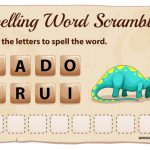When Rani first held her baby in her arms, the world’s cacophony suddenly became a harmonious lullaby. Her gaze brimmed with dreams for her precious little one – dreams not only filled with love and joy but also an intuitive longing for her child to thrive in a nourishing environment. It is a sentiment shared by parents across India, mirroring the nation’s profound reverence for education as a ladder to success and personal fulfilment. As Rani began her quest for the perfect educational system, two renowned pedagogical philosophies caught her eye: Waldorf and Montessori.
Unravelling the Waldorf Teaching Method
Rooted in the intellectual streams of philosopher Rudolf Steiner, the Waldorf teaching method aspires to create well-rounded individuals. It puts great emphasis on creativity and the development of an individual’s holistic development. In a typical Waldorf classroom, you’ll see children engaged in song, dance, art, and storytelling – quite a breakaway from traditional textbook-centric learning.
In the world of Waldorf vs Montessori preschool, the Waldorf method stands apart for its distinct lack of formal instruction until the age of seven. Young learners instead spend their time in play-based learning, fueling their imaginations. They forge a deeper connection with the world around them. As Rani explored this teaching method, she was enamoured by its warm, homely atmosphere and the emphasis on creativity. The idea of her child carving wooden toys and baking bread, rather than wrestling with alphabets and numbers, was indeed captivating.
Understanding the Montessori Education System
The Montessori educational system sits on the opposite end of this educational divide. Pioneered by Dr Maria Montessori, it is centred around the mantra of “follow the child”. This system provides children with an environment ripe with opportunities for exploration and discovery. The system also encourages their innate curiosity and zest for knowledge. Unlike the Waldorf method, Montessori introduces academics early on, but does so through practical, hands-on experiences.
The Montessori method of teaching promotes self-directed learning. In a Montessori environment, students are free to learn at their own speed and are not constrained by strict time constraints.They interact with carefully designed materials that cater to their individual learning needs and cognitive development. As Rani pictured her little one growing in such an environment, the prospect of her child enjoying the freedom to explore and learn at their own rhythm was indeed enticing.
Waldorf vs Montessori: Key Differences
So, how does one choose between the Waldorf and Montessori education systems? The secret to solving the problem is identifying the main contrasts between the two.
Waldorf education views children’s development in three seven-year stages, each corresponding to a particular developmental phase: infancy to seven years, seven to fourteen years, and fourteen to twenty-one years. The curriculum is designed to resonate with these developmental milestones and nurtures the child’s spiritual, emotional, and physical growth. The Waldorf approach takes a more collective approach, with emphasis on social harmony and creativity.
The Montessori approach, recognises four developmental stages:
A – birth to six years B – six to twelve years C – twelve to eighteen years D – eighteen to twenty-four years.
It emphasises independence, freedom within limits, and respect for a child’s natural psychological, physical, and social development. The Montessori model leans towards individuality and self-guided learning.
The Role of Teachers in Waldorf and Montessori Systems
Teachers play a distinctly different role in the Waldorf and Montessori systems. In Waldorf education, teachers form long-term relationships with students, often teaching the same group for several years. This stable connection allows teachers to develop a profound understanding of their students, enabling them to cater to the changing developmental needs effectively.
The Waldorf teaching method focuses on developing children’s emotional intelligence and creativity, hence the teachers often use narratives, arts, and music as tools for instruction. They aim to inspire students, encouraging them to view learning as a joyful, life-long journey.
In contrast, Montessori teachers act more as guides or facilitators. They present learning materials, observe the children, and step in only when assistance is needed. Montessori teachers foster an environment that encourages children’s natural curiosity and their desire to explore and learn. They respect children’s individual learning pace, promoting a sense of confidence and independence in the learners.
Parental Involvement in Waldorf and Montessori
Another aspect worth considering when choosing between Waldorf and Montessori is the level of parental involvement. Waldorf schools often encourage active participation from parents. Families frequently participate in celebrations, events, and academic pursuits because they are regarded as an essential component of the community. This harmonious integration of home and school environments aims to provide children with a sense of continuity and security.
The amount of parental involvement varies greatly in Montessori schools. Some schools welcome parental participation, while others encourage parents to maintain a more hands-off approach, allowing the child to grow and learn independently. This is not to imply that parents and teachers are not actively involved. To make sure that parents are informed of their child’s growth, Montessori schools usually use strict processes.
Conclusion: Embracing a Harmonious Blend
As Rani ruminate over these two distinguished teaching methods, she realised the question was not necessarily about Waldorf vs Montessori, but rather about which method resonated most with her child’s unique personality and learning style.
Each child is different and has a unique set of interests, abilities, and learning styles, therefore education cannot be provided in a manner that caters to all students. It is this heartfelt belief that makes Rani’s journey resonate with millions of parents across India. As we guide our children towards a brighter future, let’s remember the importance of choosing an educational approach that nurtures their individuality, fuels their curiosity, and fills their formative years with the joy of learning. After all, the most beautiful things in life often stem from a unique blend of elements, much like the sunrise that paints the sky with hues of Waldorf’s creativity and the golden rays of Montessori’s exploration.
We, at EuroKids, hope that you will make a well-balanced decision when it comes to securing the right kind of education for your little one. To know more about us and our specially crafted curriculum, visit our website today!















